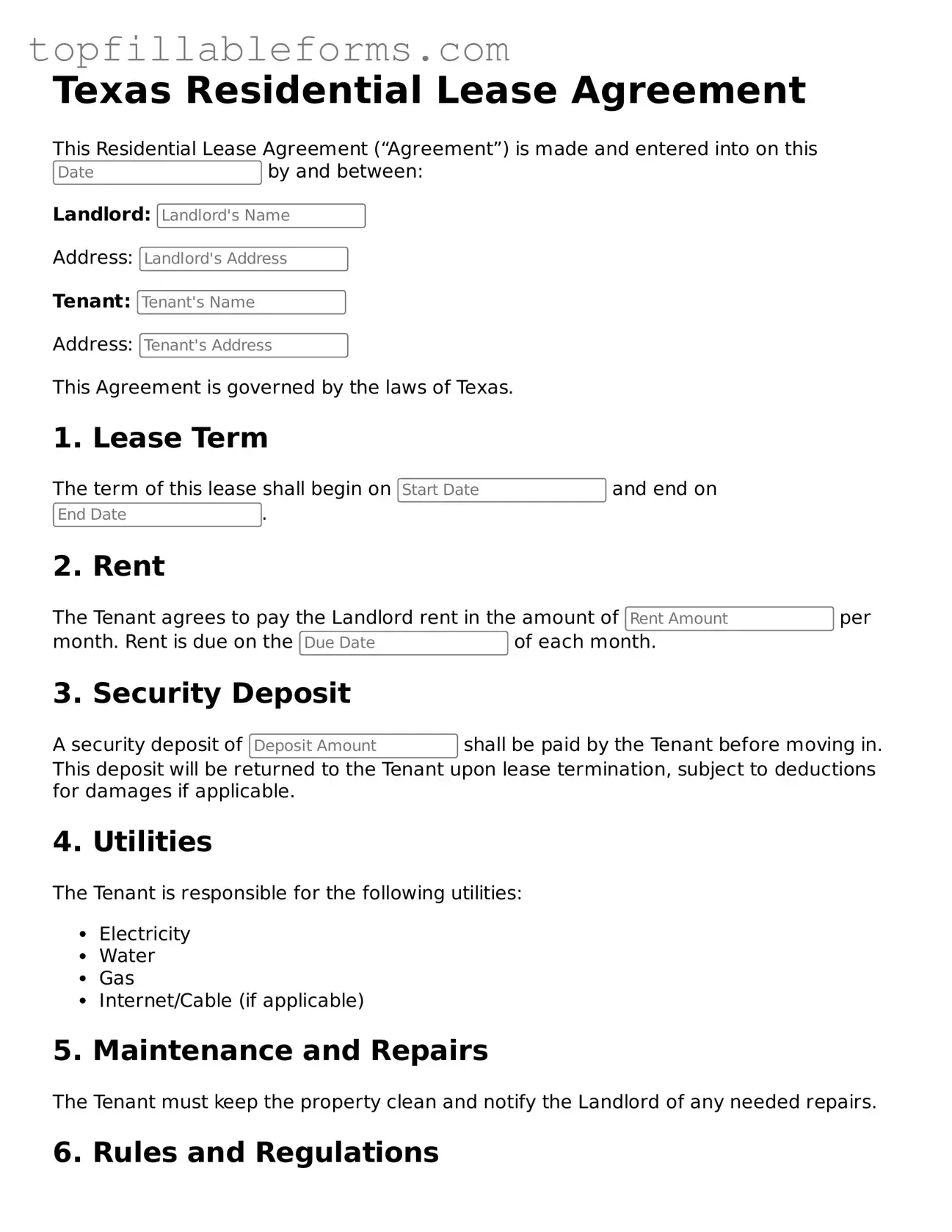Attorney-Verified Residential Lease Agreement Template for Texas
The Texas Residential Lease Agreement is a legal document that outlines the terms and conditions between a landlord and a tenant for renting residential property in Texas. This form serves to protect the rights and responsibilities of both parties, ensuring a clear understanding of the rental arrangement. Understanding this agreement is essential for anyone looking to rent or lease a home in the state.
Open Residential Lease Agreement Editor Here
